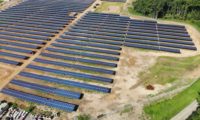Canada has announced plans to help finance a high-frequency rail line to connect Toronto, Ottawa, Montreal and Quebec City, with a request for proposals set to be issued in the fall. Projected costs range from $4.7 billion to $9.6 billion for the project, set to be completed by 2030.
A dedicated passenger track would enable trains to travel at speeds of 110 to 124 miles per hour, shaving as much as 90 minutes off some routes, such as between Ottawa and Toronto, although the speeds are below what are standard for high-speed rail.
The government has been providing small amounts of funding for the program since 2016, according to an announcement, with the total now including $491.2 million in the 2021 budget to be spent over the next six years, beginning in the 2021-2022 fiscal year.
Barry Prentice, a former director of the University of Manitoba's Transport Institute, a transportation and logistics research center, and a university professor with an expertise in supply chain management, says high-frequency rail would allow intercity rail operator Via Rail Canada to become more competitive.
“It is a major change and improvement, and would allow [it] to compete much better with alternatives like flying or driving a car,” he said.
A key aspect of the plan is creating a dedicated passenger rail line rather than requiring passenger trains to share the same line with freight, which now is a frequent cause of delay, according to Prentice. “It is not really compatible to run passenger and freight trains on the same rails,” he said.
Quicker and more efficient rail service would also boost ridership, raising the number of trips between Quebec City and Toronto to 17 million by 2059, up from 4.8 million in 2019, according to the federal transport ministry.
The ministry also plans to determine how it could integrate improved passenger rail service to Ontario cites west of Toronto, including London and Windsor, which it now is discussing with regional agencies GO Transit and Metrolinx to avoid duplication.
The commitment comes two years after the Canada Infrastructure Bank, the federal government’s project financing arm, teamed up with Via Rail Canada to create a joint project office.
Details of the procurement process have yet to be ironed out, including whether it will be a full or modified public-private partnership.
“While it is envisioned that a project of this scale will benefit from a public private-partnership, it is important to understand the market’s perspectives on the project before defining the exact nature of the partnership that will be sought,” a ministry spokesman said in an email.
But Chris Lorenc, president of the Western Canada Roadbuilder & Heavy Construction Association, points to the need for more attention and resources focused on port access upgrades and widening long stretches of the Trans Canada highway that now are two lanes.
He said it makes more sense, on some trips, for Canadian truckers to cross the border south into the U.S. to use interstates to travel to Toronto, contending that new investment would support Canada’s global trade relationships and generate revenue that helps pay for passenger rail and other benefits.
Lorenc predicted a decline in Canada’s global ranking as a trade logistics partner "if we are unable to establish we are reliable and dependable.”
There is speculation that the funding announcement ties in to expected federal elections in the fall, Prentice said. He noted that if Prime Minister Justin Trudeau's government was not reelected, "this project might find itself on the back burner," although he said, "the other government might still embrace it.”






Post a comment to this article
Report Abusive Comment